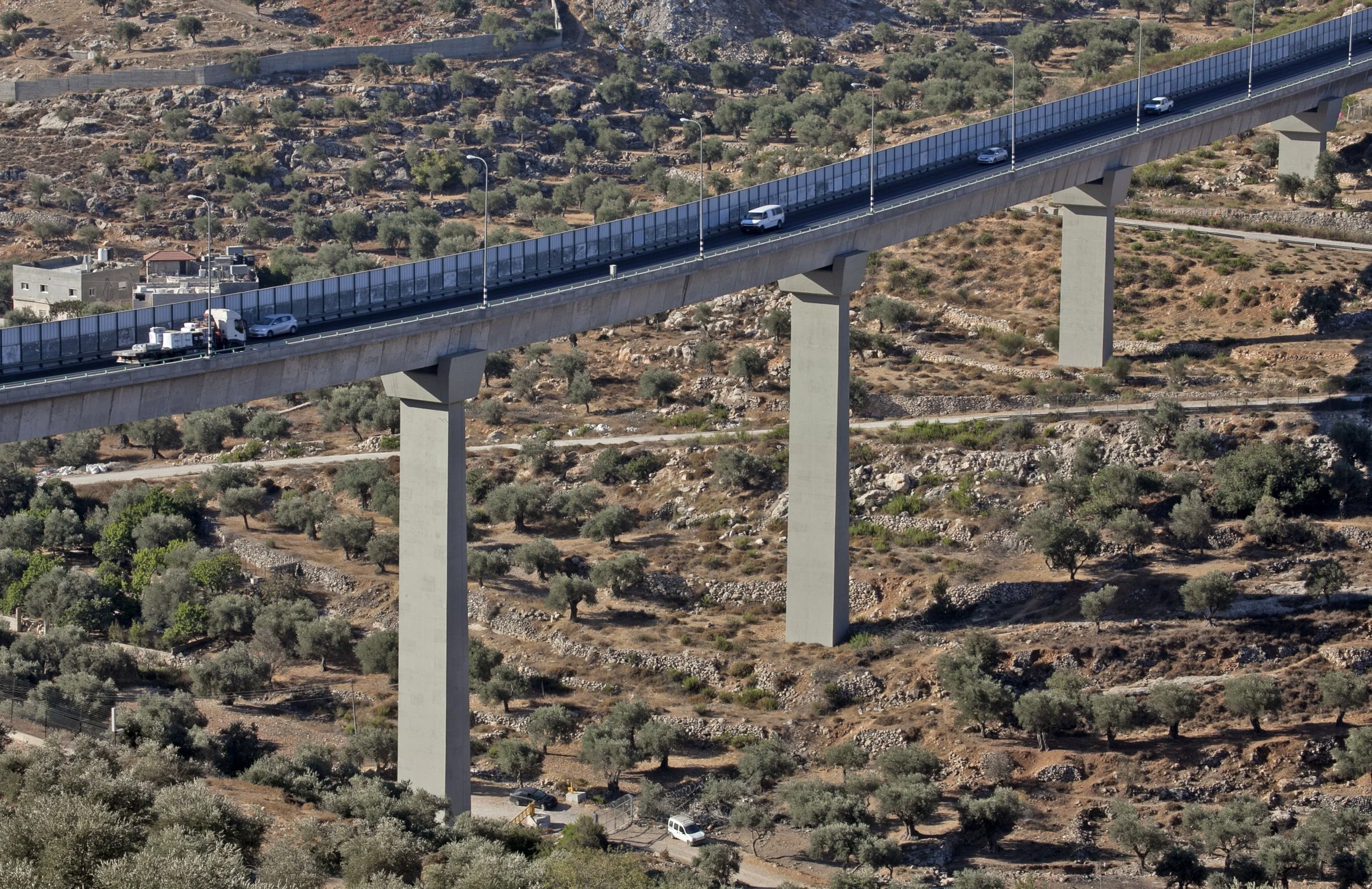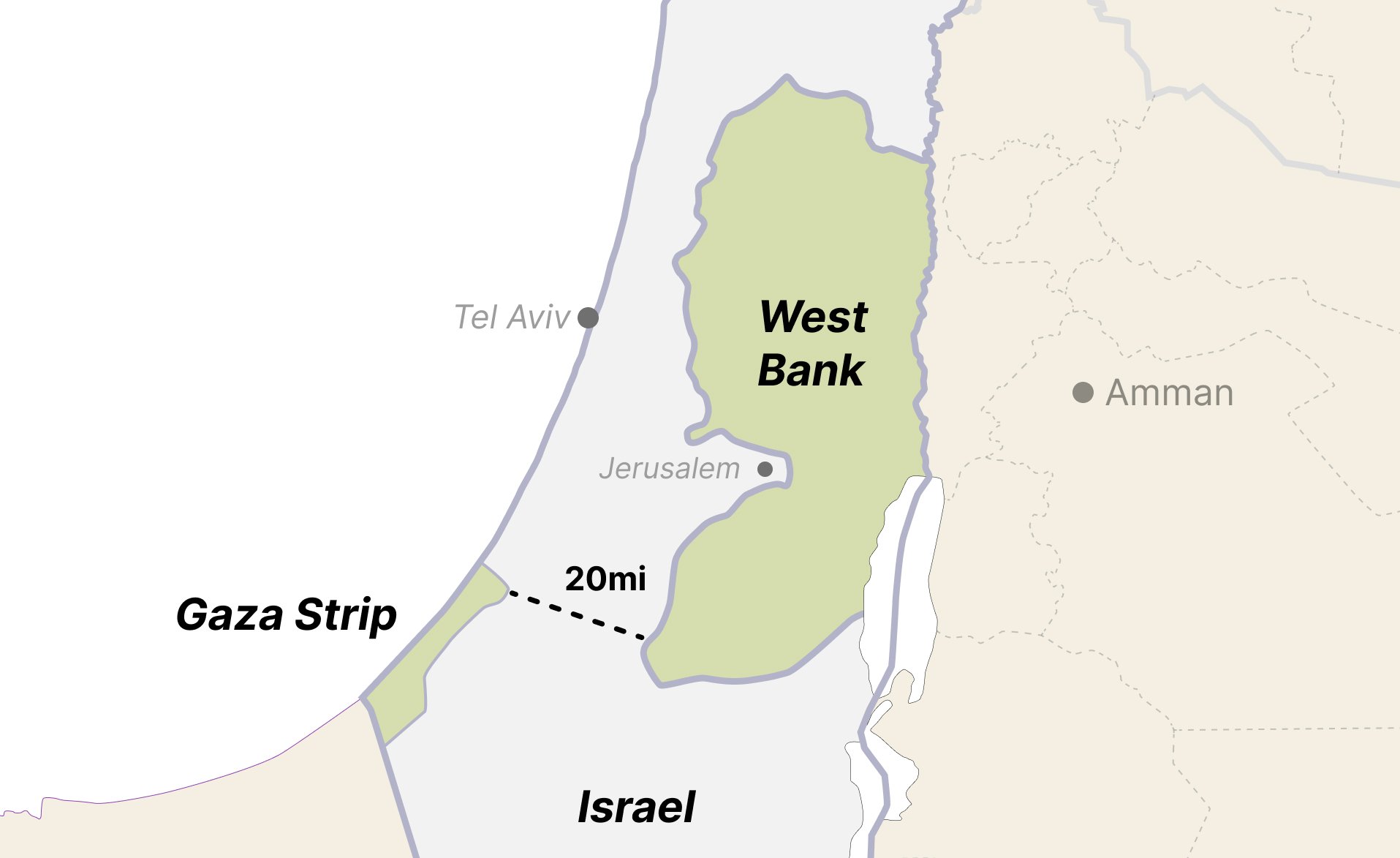To Strengthen the Palestinian Authority, Bring Back the Gaza-West Bank “Bridge” Plan
Elevated road connecting Jerusalem with the Etzion Block. Photo courtesy of Zeev Barkan.
As peacemakers begin to discuss a post-war future for Gaza, reconstruction efforts must aim towards ushering in sustainable peace, not merely the absence of war. If Gaza returns to its previous status quo—a terrorist-run enclave under Israeli blockade—the cycle of bloodshed will only continue. To build a prosperous and secure region, policymakers should dust off a 1999 proposal to construct a bridge between the West Bank and Gaza. In addition to being necessary for a viable Palestinian state, the bridge would bring about a shift in regional dynamics and serve as an inspiring symbol of peace and unity for the region.
The devastating war between Israel and Hamas has prompted activists and policymakers alike to seek transformative change in the region. As a result, the “two-state solution,” long dismissed as politically infeasible, has experienced a surprising comeback. A coalition of U.S. and Arab countries have proposed a “revitalized” Palestinian Authority (P.A.) to assume governing responsibility in Gaza, effectively paving the way towards a unified Palestinian state. In response to U.S. pressure, the P.A. is working to reform its controversial welfare policy and reshuffle its leadership. Though these are important steps, the P.A., headquartered in the West Bank, will face an acute challenge given the restrictions on movement between the West Bank and Gaza. Without easy coordination between the territories, the P.A. could easily lose power to a more extreme local party.
In a 2014 interview with Israeli humanitarian non-profit B'Tselem, Gaza resident Maha Hijawi described the West Bank and Gaza as “two separate and distant planets, with no way of getting from one to the other.” For Palestinians to travel between the territories, they must pass through Israel, which largely prohibits entry outside of cases of extreme medical emergency. Even if a Gazan marries a resident of the West Bank, travel can require a years-long “family unification” process that is not always successful. Israel could potentially speed up its permit and checkpoint system, but the process will inevitably remain tedious and humiliating for the Palestinians, especially in the aftermath of this war. But for as much as movement restrictions affect the lives of individual Palestinians, they’re even more punishing for the collective. According to a 2020 United Nations report, an estimated $16.7 billion in GDP was lost as a result of Gaza’s isolation between 2007 and 2018. The separation of the territories has also effectively landlocked the West Bank, weakening its economy by inhibiting crucial trade from the Mediterranean. The result is two territories that are economically, administratively, and physically severed.
Despite only being 20 miles apart, few can travel between the territories. Source: Adobe Stock.
Fortunately, the narrowest point between the West Bank and Gaza is a mere 20 miles, considerably shorter than the world’s longest bridges. Bridging this gap and connecting the territories would effectively unify their populations, enabling the P.A. to extend its governance to Gaza and increasing its chance of long-term success. Given the high volume of traffic it would support, the bridge could be expanded to include a multi-lane freeway with an added rail line. Some proposals have even included schemes for a multi-use bridge with an added water pipeline to address the West Bank’s frequent droughts. If realized, this would be a natural boon for the region’s development, in part by providing easier access between Gaza and the Gulf states through Jordan.
For this plan to experience any success, Israel’s security must be guaranteed. In 2017, I worked on a farm in Bil’in, a small village outside of Ramallah in the West Bank. Israeli soldiers would repeatedly burst onto the property, inspecting the farm’s structures and occasionally ordering their destruction. These episodes would anger the local Palestinian villagers, sparking protests and violent skirmishes at the border. From the hilltop farm, I could peer into a nearby Israeli settlement, close enough to see Israeli children playing on their front balconies. Given the region’s history of extremist violence, it is not difficult to understand why the parents of these children—living within the visible range of a potential threat—might opt for aggressive security measures. But those very precautions often inflame the threat they are meant to mitigate, and provide the resentment necessary to drive some to militancy. Witnessing this tit-for-tat dynamic play out on the hills of the West Bank helped me appreciate both the precariousness of peace-building and the human element of this conflict. As the failure of the Oslo Accords has shown, when efforts to improve Palestinian freedom are exploited by extremists, the peace process will quickly unravel. As we know, such failures carry a steep cost.
View of Israeli settlements from a Palestinian farm in Bil’in, in the Ramallah Governorate. Photo by Fenner Stevens.
Notably, the Gaza-West Bank bridge plan was first put forward by former Israeli PM Ehud Barak, a testament to its compatibility with Israel’s security needs. Under Barak’s plan, the bridge could be turned into a fully secured corridor, not unlike Israel’s highly reinforced roads throughout the West Bank. Without a bridge, peacetime would require Israel to further expand its costly security apparatus to accommodate increased travel over land crossings, creating a logistical nightmare and, in light of October 7, a critical security vulnerability. Alternatively, a bridge would be less disruptive to Israeli travel and avert the need for pesky checkpoints. Unfortunately, the 1999 plan was dismissed as “outlandish” and “costly,” and, as so many hopeful political solutions do, it fell victim to partisan pressure. Barak was voted out of office just a year later.
While the plan is indeed ambitious, comparable projects have been built for a quarter of the Biden administration’s proposed $14 billion military aid package to Israel, a cost that could undoubtedly be covered by coordinated international effort or even a coalition of Western and Arab states alone. If there ever was a time for such an effort, it is now. Following the shocking and brutal events of this war, it has become all the more urgent to ensure that the previous status quo never returns. Meeting the demands of this crisis will require international cooperation, serious concessions from all parties, and major changes in political leadership, but all of those must come in concert with tangible measures to provide relief to the central problem of Palestinian movement. A bridge between Gaza and the West Bank is not only economically and socially beneficial—it is a crucial step towards creating sustainable peace in the region.
Fenner Stevens (GS ’25) is a columnist for CPR and a junior studying political science. Before transferring to Columbia, he studied in the Czech Republic and Israel.



